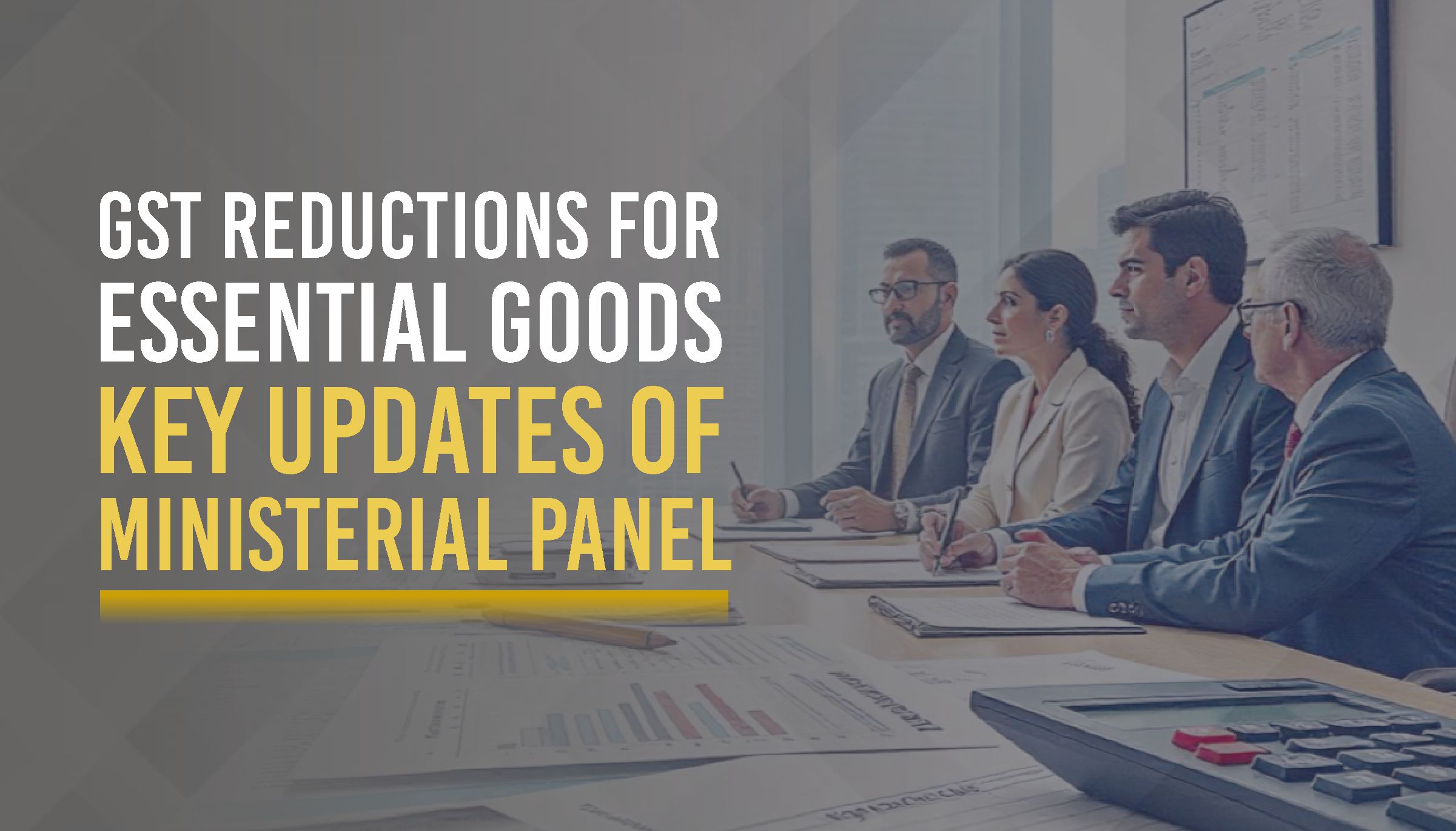GST Reductions for Essential Goods: Key Updates of Ministerial Panel

In a bid to balance revenue collection with the need to provide relief on essential goods and services, the ministerial panel is considering a reduction in Goods and Services Tax (GST) rates on items such as medicines, tractors, and insurance policies. This move is part of the government’s broader tax rationalization effort, which seeks to strike a balance between lowering tax burdens on critical sectors and maintaining revenue stability for both the central and state governments.
GST Rate Reductions on Essential Goods
One of the most significant discussions within the panel is focused on lowering GST rates for certain essential goods, particularly medicines and tractors. Currently, medicines are taxed at 12% under the GST regime, and the proposal suggests reducing this to 5%. Similarly, tractors, which fall under different tax slabs ranging from 12% to 28%, are also being considered for a reduction to a uniform 5%.
This reduction aims to make these essential goods more affordable, especially in rural areas where tractors are critical for agricultural activities. However, this move raises concerns about potential revenue losses, especially since the tractor sector contributes a substantial portion of GST revenue.
Impact on Revenue and Compensation
Reducing GST on tractors and medicines could create a significant revenue shortfall for both the central and state governments. For example, lowering the tax rate on medicines from 12% to 5% could result in an annual revenue loss exceeding Rs 11,000 crore. Given the importance of maintaining fiscal balance, the panel is considering alternative sources to offset the potential revenue loss.
One option under consideration is increasing the GST on high-end electric vehicles (EVs) and imported luxury cars. Currently, these items attract a 5%, but vehicles priced above Rs 40 lakh may see an increase in GST to compensate for the reduced revenue from other sectors. This adjustment would affect a niche segment of the market, while helping to preserve overall tax revenues.
Proposed Changes to GST on Health and Term Insurance
In addition to essential goods, the panel is also considering GST rate cuts for health and term insurance policies. Under current law, health insurance premiums are taxed at 18%. The proposal suggests reducing this rate to 12%, offering relief to policyholders and encouraging more people to invest in health insurance.
For term insurance, a product that provides financial protection without investment returns, the proposed reduction is even steeper, with GST potentially being lowered to 5%. There are discussions about placing term insurance in the ‘nil’ tax category to further encourage uptake, but this proposal faces resistance due to concerns over its impact on the ability of life insurance companies to claim input tax credits. A 5% GST rate appears to be a more practical middle ground.
The Challenge of Balancing GST Slabs
A broader challenge for the ministerial panel is the ongoing effort to reduce the number of GST slabs from four to three. Currently, the GST system has four primary tax rates: 5%, 12%, 18%, and 28%. While a three-rate structure would simplify the system, it poses challenges in terms of revenue stability, particularly for states that rely heavily on the 18% and 28% slabs.
Despite these discussions, the possibility of consolidating tax slabs remains slim in the immediate future. States such as Kerala, Karnataka, and West Bengal have expressed resistance to any major changes to the current tax structure. Kerala’s Finance Minister, KN Balagopal, in particular, has been vocal about retaining the current rates, citing the state’s financial difficulties.
Meeting Schedule and Next Steps
The panel’s work is ongoing, with key meetings scheduled for later in the year. A meeting to specifically address health and term insurance rates is set for October 19, followed by discussions on broader rate rationalization on October 20. These meetings will be crucial in determining the final rates and ensuring that any changes maintain a balance between consumer relief and revenue stability.
The fitment committee is expected to provide item-specific details ahead of the panel’s meetings, offering clarity on which products may see changes and how they will impact overall GST collections. This data will be essential for finalizing the panel’s recommendations.
Revenue Concerns and Industry Impact
The potential revenue losses from lowering GST rates on essential items are not insignificant. Health insurance alone generates over Rs 8,000 crore in GST revenue annually, while the 28% slab is crucial for funding government projects, contributing almost 72% of total GST collections.
Additionally, the panel is wary of cartelisation risks in certain sectors. The cement industry, known for its history of price-fixing, is one example where GST reductions may not be forthcoming. Cement, along with other “sin goods” like cigarettes, soft drinks, and packaged snacks, is expected to remain at the 28% due to its revenue contribution and the potential risks associated with lowering the tax rate in these industries.
Balancing Relief with Fiscal Responsibility
As the ministerial panel continues to deliberate, the central question remains how to balance the need for tax relief on essential items with the revenue requirements of both the central and state governments. The proposed reductions in GST for medicines, tractors, and insurance policies could offer significant benefits to consumers, but the potential revenue shortfall poses a significant challenge.
With further discussions scheduled and detailed data analysis underway, the final decisions on GST rate rationalization are expected to provide more clarity on how the government plans to navigate this complex balancing act.
